Don't wanna be here? Send us removal request.
Text
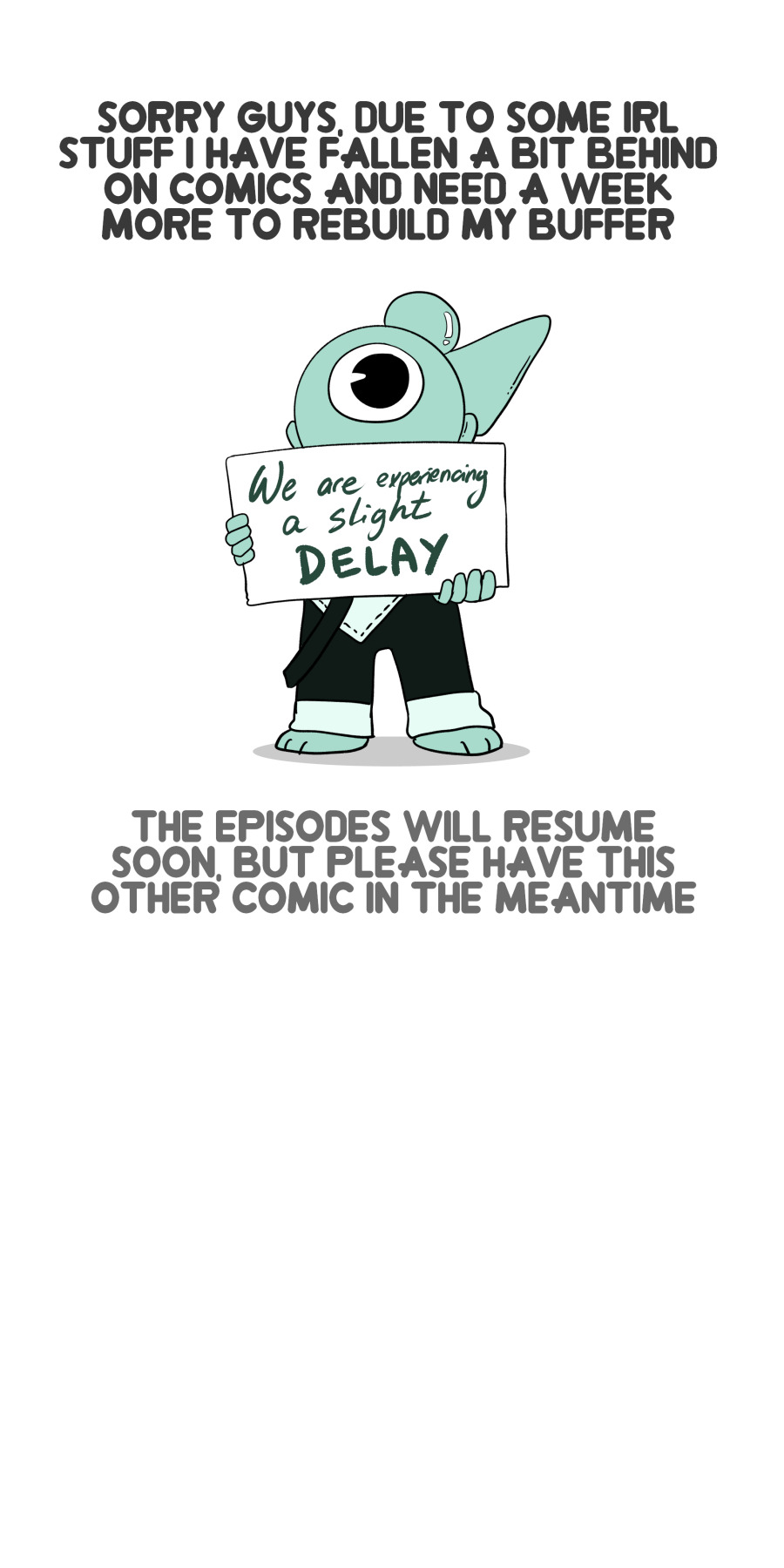


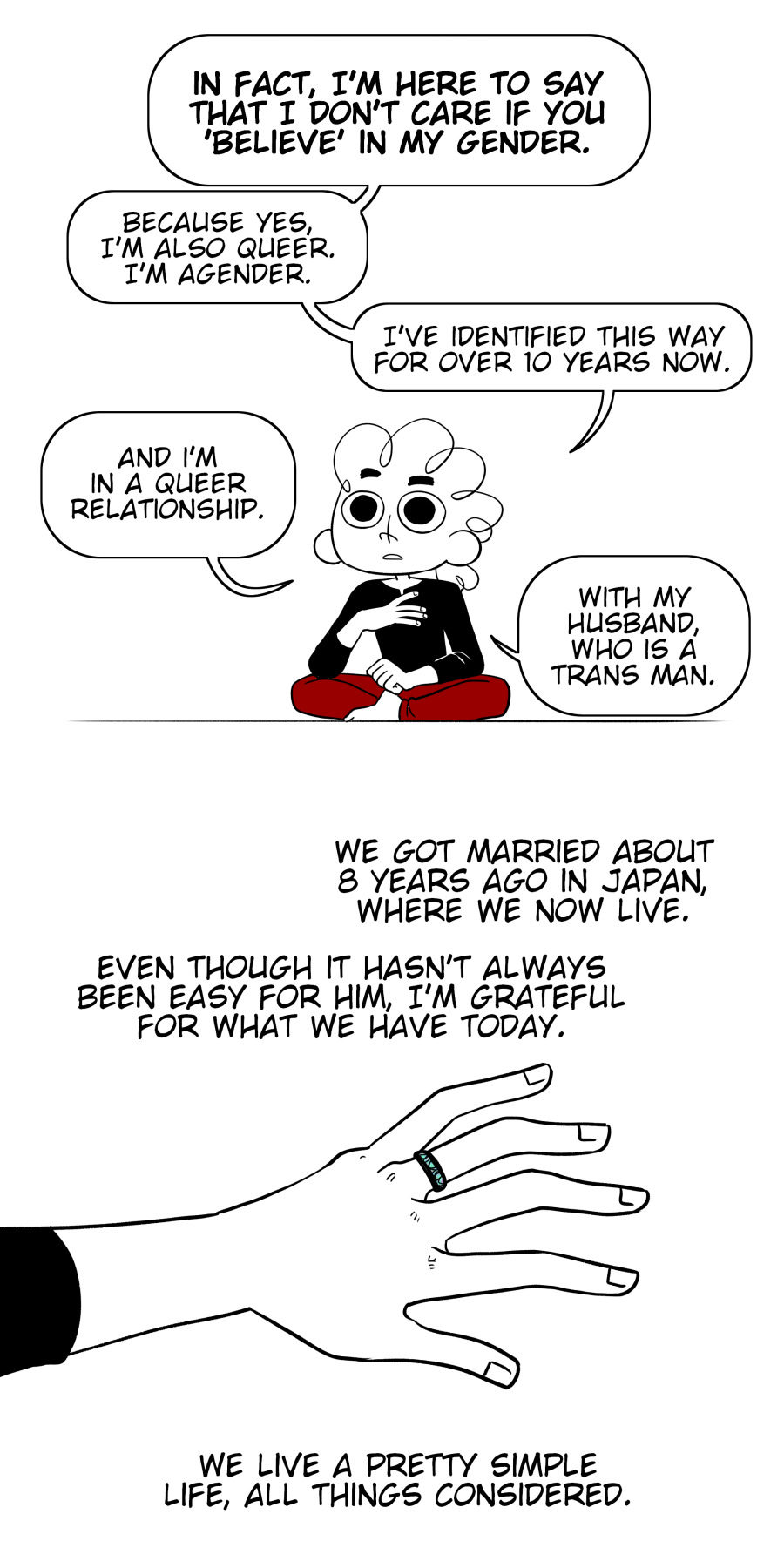


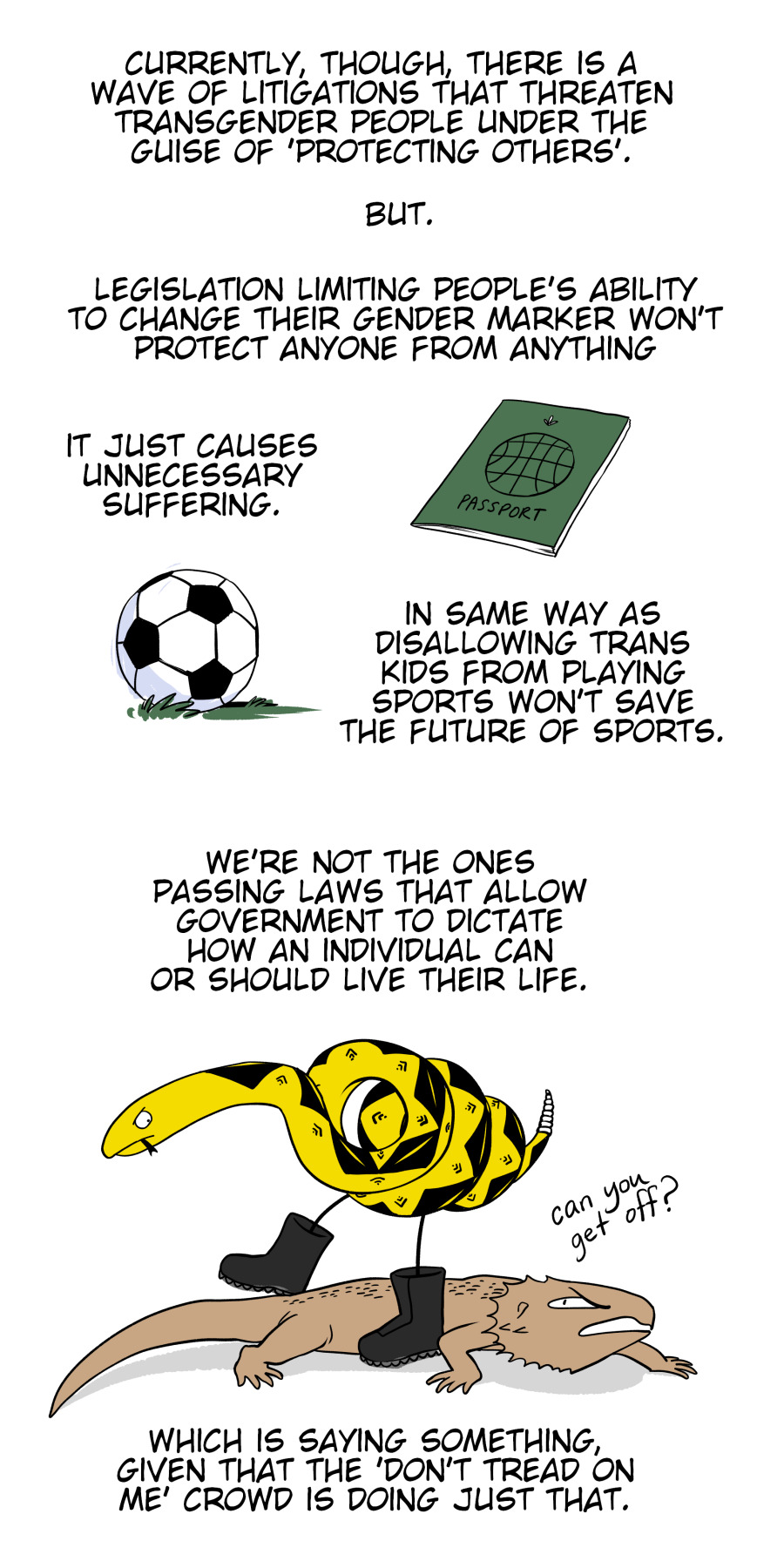

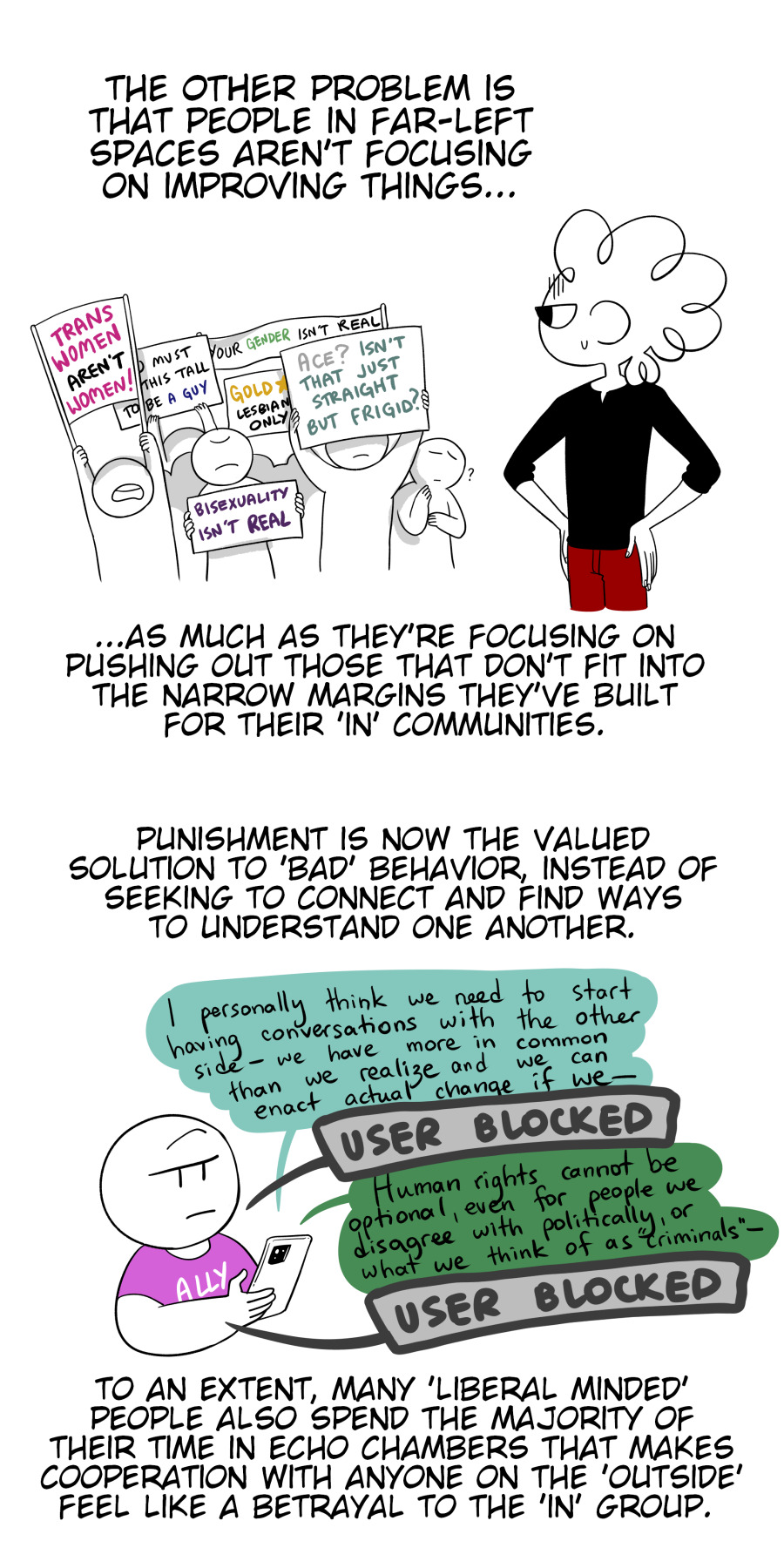
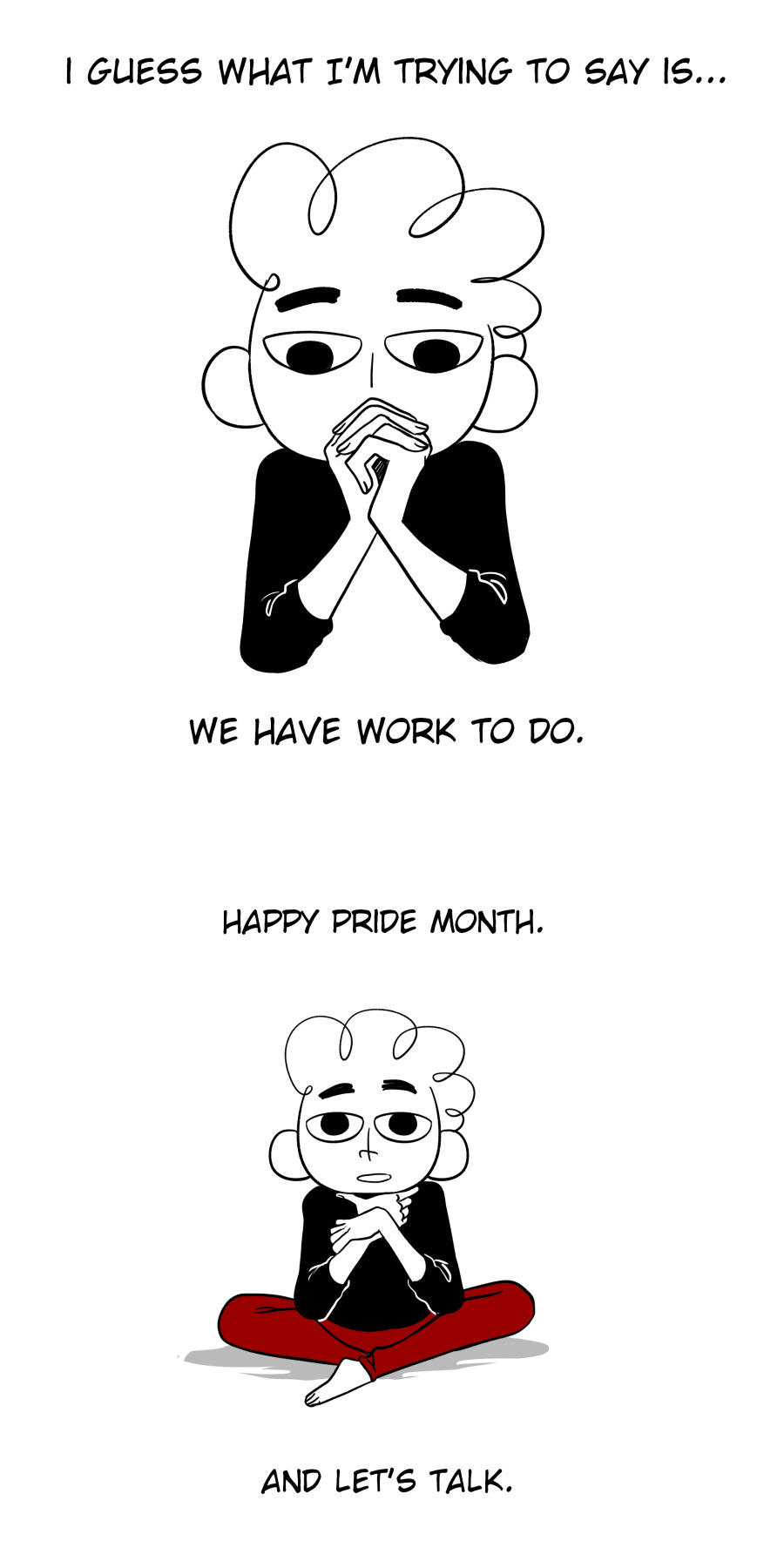
Why am I posting this?
Because I know I have a lot of young people following me, and because over the past few years, I've seen a shocking amount of anti-gay rhetoric in MY comment section. Of my Steven Universe fancomic. An extremely lgbtq-friendly show.
So what gives? My best guess is, I have a very wide following, and a lot of these readers are pretty socially insulated in conservative spaces that don't allow them to explore the concepts of the other side of the argument.
I'm not about to judge children on the environment they were raised in... but I'm also here. I'm a part of the environment. And I'd like to offer some perspectives.
If you don't agree with how I present things - great! Make your own post.
2K notes
·
View notes
Text
I was thinking about how I have grown to value mandatory voting over a system that allows allegedly more freedom. Because in country, mandatory voting means I just have to send in a ballot. It can be empty or filled with the write in ballot "pickle farts" if I want.
If I go to the voting station all I have to do is get my name checked off. I don't have to vote if I don't want to.
But it means it is much more difficult for the government to try and suppress voters. Because voters have a legal obligation to go to the polls, so you can't restrict them or try tactics to dissuade them.
Voting polls are open long hours with access to food and water being a fairly standard staple. You don't need any form of ID, you have to be given time to go vote in work hours without penalty if you cannot do it after work hours.
Every now and then a politician tries some small way of voter suppression but it isn't as easy. And so I have learned to appreciate it.
But when I googled, out of curiosity, if the USA had ever had anything like that I was met with a barrage of websites talking about freedom and justice and the absolute liberty of Americans. I thought an eagle was going to bust out of the screen.
Going through some of these I noticed they were think tanks connected to billionaires, one of them was funded and created by the Koch brothers.
Gotta love how often the American "freedom" is actually used as a way to further deny actual freedoms, both linguistically and politically.
17K notes
·
View notes
Text
Old news, but important to remember. With simple fit adjustments, N95 masks block nearly all potentially infectious exhaled particles. This is why we need universal public masking and for people to wear quality masks. If we just had source control, we'd have far less cases of Covid, flu, measles, RSV, and more, and there'd be far more living older people, disabled people, and infants (when you say what "high-risk" actually means broadly, it makes it a bit more human, huh?).
2K notes
·
View notes
Text
Images from the No Kings protest on Saturday, June 14, 2025:
Minnesota:


Chicago:

San Diego:

Dallas:

Seattle:

San Francisco:

Philadelphia:

Los Angeles:

(source 1, source 2, source 3, source 4, source 5, source 6, source 7, source 8, source 9)
21K notes
·
View notes
Text
"An AI-equipped foot scanner placed at one’s bedside could be a lifesaving companion to those living with a risk of heart failure.
Developed by Heartfelt Technologies in concert with the UK’s National Institute of Health, the scanner takes 1,800 photos of a person’s two feet and analyzes them for signs of a fluid buildup called oedema, one of three best indicators of oncoming heart failure.
Heart failure occurs when the heart’s inability to pump blood properly results in a buildup of fluid in the lungs and a lack of blood-derived oxygen reaching vital organs.
Dr. Philip Keeling, the lead author on a study debuting the invention who is also a consultant cardiologist at the South Devon National Health Service Foundation Trust, explained why such a device would be a key tool in combating heart failure, something which affects 1 million Brits every year.
“This device detects one of the big three warning signs for people with heart failure before they end up in hospital,” he wrote, according to the BBC.
“Only about half of people admitted to hospital with heart failure currently get assigned an early review by a heart failure nurse who can check to see if they are suffering a harmful build-up of fluid because their heart is not working properly.”
“Amid a shortage of heart failure nurses, a device like this can be like a virtual nurse, tracking people’s health.”
AI IN MEDICINE:
Teens Developed App That Identifies Mouth Cancer–Making Early Diagnosis Easy and Winning $50k for Their School
In 10 Seconds, an AI Model Detects Cancerous Brain Tumors Often Missed During Surgery
After Studying Mammograms, AI Can Detect More Breast Cancers Than Humans–With Fewer False Positives
New AI Smartphone App Accurately Diagnoses Ear Infections and Prevents Unnecessary Antibiotic Use
The study which Dr. Keeling helped run involved 26 patients across five NHS trusts. Alerts given by the device of potential heart failure came between eight and 19 days in advance of a hospitalization, giving a mean prediction time of 13 days, which is enough for measures to be taken that could prevent hospitalizations.
Six hospitalizations occurred during the trial period, and the device accurately predicted 5 of them. 82% of patients decided to keep the device after it ended.
“This small study suggests a simple device could significantly improve outcomes for at-risk patients with heart failure by keeping them out of hospital,” said Dr. Bryan Williams. Chief Scientific and Medical Officer at the British Heart Foundation which was not involved with the study."
-via Good News Network, June 16, 2025
293 notes
·
View notes
Text





y'all it's about to get really fucking humid and hot
52K notes
·
View notes
Text
"A German bio-tech company has developed a naturally-occurring enzyme discovered in a cemetery into a near-market ready solution for recycling plastic without any loss of quality.
In 2022, GNN reported on a paper published by Leipzig-based scientists who first identified the enzyme. At the time, the enzyme was subject to a small side-by-side test, and caused the polyethylene terephthalate (PET) plastic to decompose by a whopping 90%.

Pictured: Before and After: A container of PET after 24 hours of contact with the enzyme leaves only dye
Fast forward to the spring of 2025 and those same scientists have perfected the capabilities of that enzyme, called PHL7, and have founded ESTER Biotech to bring those capabilities to market.
Their initial plan to be finished next year is a bathtub-sized pilot project reactor. If successful, their 2030 plan will be four 350 cubic-meter reactors capable of processing 45,000 metric tons of PET plastic every year.
PHL7 and ESTER Biotech boast several advantages over chemical and thermal recycling methods. For starters, once the polymers of PET are broken by the enzyme into monomers, or single component parts, they have suffered no degradation of their material characteristics unlike some recycled plastic which is weaker or less stable.
Additionally, PHL7 is exceptionally stable from 32 to 203 degrees Fahrenheit (0-95°C), and per kilogram of plastic, a dose of only 0.02% to 0.06% of the enzyme is required—substantially less than existing alternatives. Their new version of the enzyme also recycles the plastic several hours faster.
“Our technology makes it possible to bring material flows that are currently burned back to the beginning of the cycle at the molecular level,” says Christian Sonnendecker, lead author on the paper of the enzyme’s discovery, and co-founder of ESTER Biotech at the University of Leipzig. “And with high energy efficiency and scalability.”
“We are only at the beginning. But we are convinced that when science, entrepreneurial spirit and social responsibility come together, a cemetery enzyme can become a beacon of hope for a better future.”
RECYCLING BREAKTHROUGHS:
Scientists in Japan Develop Non-Toxic Plastic That Dissolves in Seawater Within Hours
Cornell Researchers Create First-of-its-Kind Durable and Recyclable Plastic
New Process ‘Vaporizes’ Plastic Bags and Bottles to Help Make Recycled Materials
Revolutionary New ‘Living Plastic’ That Could Slash Damage to the Environment Developed by California Researchers
ESTER Biotech’s enzyme is able to separate certain multilayer composites which are normally thought of as unrecyclable. In addition to the infrastructure of the pilot project, ESTER is currently working with two medium-sized partners to build a cost-efficient supply chain with an aim to reduce the enzyme price to between 100 and 200 euros per kilogram.
Though no currently-commercialized recycling method can compete with the cost of virgin plastic, a price between 100 and 200 euros will put it in line with existing competitors.
Fortunately for anyone in the space, the EU is not afraid to use heavy-handed regulation to guarantee plastic recycling rates. By 2040, under existing EU legislation, 65% of plastic production will be mandated to come from recycled sources. ESTER believes that with its potential to offer a higher quality “recyclate,” the incentive to pursue and expand enzymatic methods will increase."
-via Good News Network, June 13, 2025
2K notes
·
View notes
Text
i always think about that study where they had adults hold a baby, and when they were told the baby was a girl the adults said she was cute and small, and when they were told the baby was a boy they said he was big and strong. they rated the baby’s ability to do things and tendency towards certain toys differently. they even held the baby differently. (x) or when they rated the baby’s physical ability to do various tasks such as climbing up a slope differently, (x) & when they measured how much parents told their girl children vs. their boy children to be careful and stop being so rowdy (x), & when they measured how often girls and boys were told to be quiet. (x) this was, obviously, all unconscious behavior in the adults. they’re not all like, raving sexists who outspokenly believe that women can’t do stuff or that girls really should just be quieter, be more still than boys. like its not even counting the direct, actual messages, its just literally how every single person in your entire life treats you, and if asked they would probably deny that its even because you’re a girl. how the fuck am i supposed to believe this doesn’t affect a child’s development when its literally constant throughout the entire process
96K notes
·
View notes
Text
"Japan is the first country to begin clinical trials of artificial blood, a medical innovation which if proven successful, would solve one of the largest hospital challenges of our age.
Beginning back in March, a clinical trial organized by Nara Medical University will look to build on the success of an early-stage trial in 2022 of hemoglobin vesicles, small artificial blood cells that were confirmed to be safe and capable of delivering oxygen as normal.
The trial will administer 100 to 400 milliliters of the artificial blood cells to further test safety before moving onto broader performance and efficacy targets, all in the hopes that by 2030, the artificial blood could enter clinical use.
Whether high-income or low-income, every country has challenges meeting the necessity necessary amounts of stockpiled blood donations for emergency medical procedures.
In high-income countries where the 90% of blood stockpiles comes from voluntary donors, the challenge is getting enough of these donations, and crucially, enough from those with rare blood types.
In low-income countries where only 40% of needs are met with donations, the challenge lies in importation from abroad when donated blood packs are only safe for use for a few months. A useful proxy to understanding this shortfall is that of 175 countries included in a survey of blood donation and use practices by the World Health Organization, 106 countries report that all blood plasma-derived products are imported. These include things like immunoglobulins and coagulation factors which are needed to prevent and treat a variety of serious conditions.
Japan has a different challenge. The WHO found that the use of donated blood varied with income levels, reporting that high-income countries used more blood donations to treat those aged 65 and older, while lower-income countries used it to treat those aged 5 and under.
Japan has recognized that its long-since-collapsed replacement birth rate coupled with long life-expectancy will place a likely unsustainable burden of blood donation on a shrinking working-age population, making artificial blood a priority innovation.
Professor Hiromi Sakai at Nara Medical University has pioneered one method for its synthesis. Using hemoglobin—the oxygen carrying molecule inside red blood cells—from expired donations and encasing them in protective shells, removing the need of matching blood type for administration.
Another method comes from Chuo University where the hemoglobin is encased in an albumin-family protein, which has been used in animal studies to stabilize blood pressure and treat conditions like hemorrhage and stroke.
Either way, the necessity is there and it’s urgent for Japan and the world. If the country’s researchers succeed in this innovation, it will be a medical milestone of epic proportions."
-via Good News Network, May 28, 2025
836 notes
·
View notes
Text
"A cure for HIV could be a step closer after researchers found a new way to force the virus out of hiding inside human cells.
The virus’s ability to conceal itself inside certain white blood cells has been one of the main challenges for scientists looking for a cure. It means there is a reservoir of the HIV in the body, capable of reactivation, that neither the immune system nor drugs can tackle.
Now researchers from the Peter Doherty Institute for Infection and Immunity in Melbourne, have demonstrated a way to make the virus visible, paving the way to fully clear it from the body.
It is based on mRNA technology, which came to prominence during the Covid-19 pandemic when it was used in vaccines made by Moderna and Pfizer/BioNTech.
In a paper published in Nature Communications, the researchers have shown for the first time that mRNA can be delivered into the cells where HIV is hiding, by encasing it in a tiny, specially formulated fat bubble. The mRNA then instructs the cells to reveal the virus.
Globally, there are almost 40 million people living with HIV, who must take medication for the rest of their lives in order to suppress the virus and ensure they do not develop symptoms or transmit it. For many it remains deadly, with UNAids figures suggesting one person died of HIV every minute in 2023.
It was “previously thought impossible” to deliver mRNA to the type of white blood cell that is home to HIV, said Dr Paula Cevaal, research fellow at the Doherty Institute and co-first author of the study, because those cells did not take up the fat bubbles, or lipid nanoparticles (LNPs), used to carry it.
The team have developed a new type of LNP that those cells will accept, known as LNP X. She said: “Our hope is that this new nanoparticle design could be a new pathway to an HIV cure.”
When a colleague first presented test results at the lab’s weekly meeting, Cevaal said, they seemed too good to be true.
“We sent her back into the lab to repeat it, and she came back the next week with results that were equally good. So we had to believe it. And of course, since then, we’ve repeated it many, many, many more times.
“We were overwhelmed by how [much of a] night and day difference it was – from not working before, and then all of a sudden it was working. And all of us were just sitting gasping like, ‘wow’.”
Further research will be needed to determine whether revealing the virus is enough to allow the body’s immune system to deal with it, or whether the technology will need to be combined with other therapies to eliminate HIV from the body.
The study is laboratory based and was carried out in cells donated by HIV patients. The path to using the technology as part of a cure for patients is long, and would require successful tests in animals followed by safety trials in humans, likely to take years, before efficacy trials could even begin.
“In the field of biomedicine, many things eventually don’t make it into the clinic – that is the unfortunate truth; I don’t want to paint a prettier picture than what is the reality,” stressed Cevaal. “But in terms of specifically the field of HIV cure, we have never seen anything close to as good as what we are seeing, in terms of how well we are able to reveal this virus.
“So from that point of view, we’re very hopeful that we are also able to see this type of response in an animal, and that we could eventually do this in humans.”
Dr Michael Roche of the University of Melbourne and co-senior author of the research, said the discovery could have broader implications beyond HIV, with the relevant white blood cells also involved in other diseases including cancers.
Dr Jonathan Stoye, a retrovirologist and emeritus scientist at the Francis Crick Institute, who was not involved in the study, said the approach taken by the Melbourne team appeared be a major advance on existing strategies to force the virus out of hiding, but further studies would be needed to determine how best to kill it after that.
He added: “Ultimately, one big unknown remains. Do you need to eliminate the entire reservoir for success or just the major part? If just 10% of the latent reservoir survives will that be sufficient to seed new infection? Only time will tell.
“However, that does not detract from the significance of the current study, which represents a major potential advance in delivery of mRNA for therapeutic purposes to blood cells.”"
-via The Guardian, June 5, 2025
4K notes
·
View notes
Text
"Why is it a problem if students use AI to get through college"
Because if you demonstrate to me that you're willing to set aside concern for truth, evidence, and verifying things with your own eyes whenever it happens to be inconvenient for you, I have a solemn responsibility to make sure you don't get into medical school.
67K notes
·
View notes
Text
honestly, especially in the current state of the world, you all have GOT to kill whatever puritanical voice inside your head keeps insisting that if something is erotic it has no social, artistic, or intellectual merit.
stop acting as if someone can’t enjoy both erotica and literary fiction or classics. it’s not some dichotomy.
stop acting as if erotic art can’t be poignant and meaningful. and that includes all erotic art - not just fine art.
stop insisting that sex scenes or erotic material ruin movies and shows just because you, personally, get icked out watching it.
no, not all erotic art is high art, and not all erotic art is meant to invoke deep intellectual discussion - but insisting that makes erotic art valueless, a disservice to intellectualism, or whatever else - does nothing but add fuel to a fire built on conservative ideology.
11K notes
·
View notes
Text
youtube
Do I have an economics-nerd crush on Robert Reich? Why yes I do. I am biased. But here's my favorite economist being smart about stuff again.
35 notes
·
View notes
Text
Just sitting here thinking to myself, it's only been 75 years since it became normal for parents not to bury their own children. It's only been about 3 generations since we mourned a quarter of our children. It's been a tiny sliver of a slice of the history of humanity since surviving your first 10 years was a coin flip

source
and I can't even imagine it. I cannot comprehend what it was like for 99.99% of history. How did they survive burying half of their children? I fully expect my own children to outlive me; it will be considered a rare, unexpected tragedy if they don't. How was this much misery normal for that much of history?
3K notes
·
View notes
Text
The history of the Disney company is so fucking fascinating and complicated that I could spend the rest of my life studying it.
I hate the company. I love the media. I want it to burn. I was profoundly shaped as a person by some of the art its workers have produced. It’s evil. It’s beautiful. It’s an eldritch horrorterror personified as a charismatic mouse. It’s a nightmarish example of capitalist hell. It destroys as much as it creates. It’s a flaming trainwreck. I can’t look away.
It’s the goddamn Elephant’s Foot of media studies.
54K notes
·
View notes

